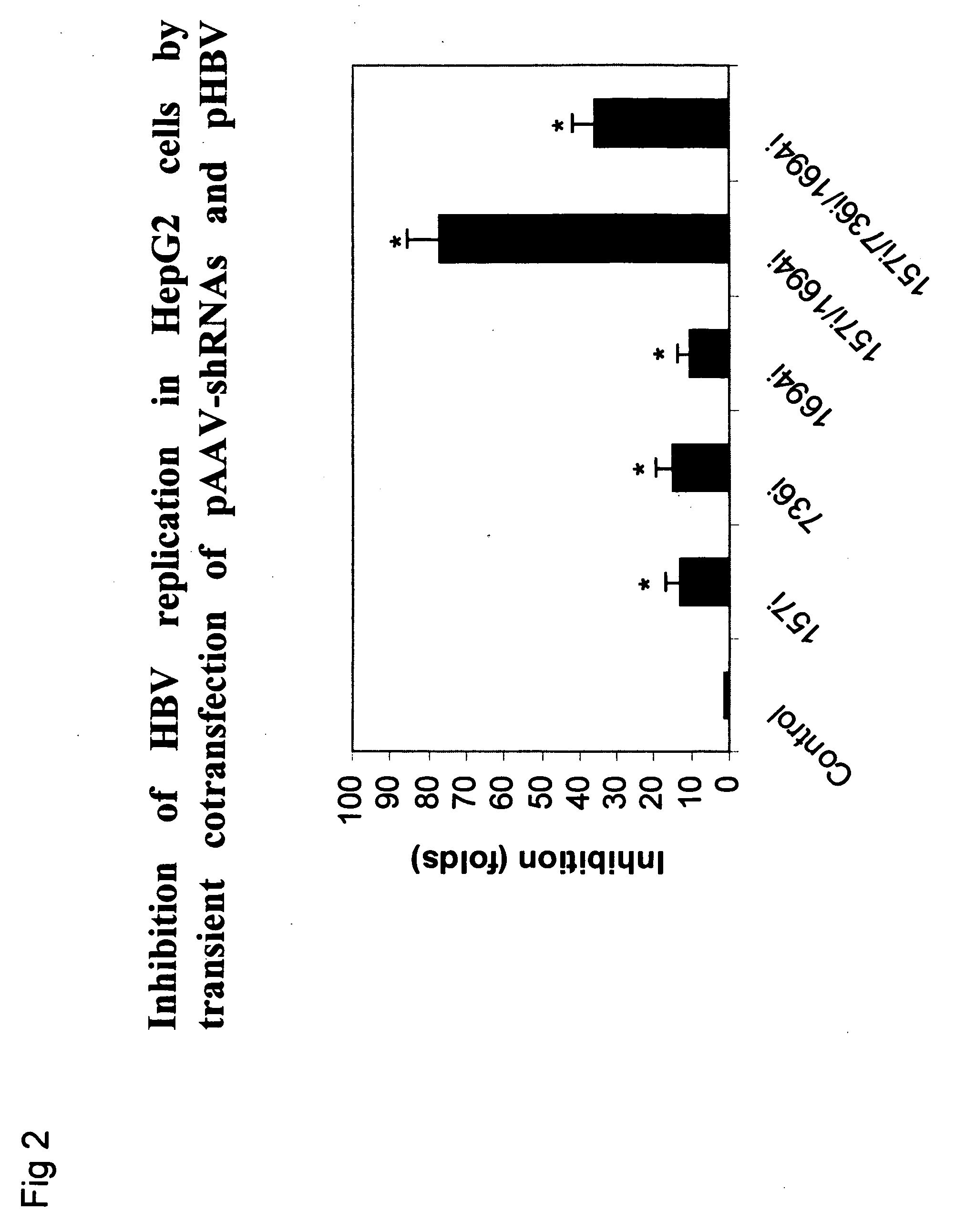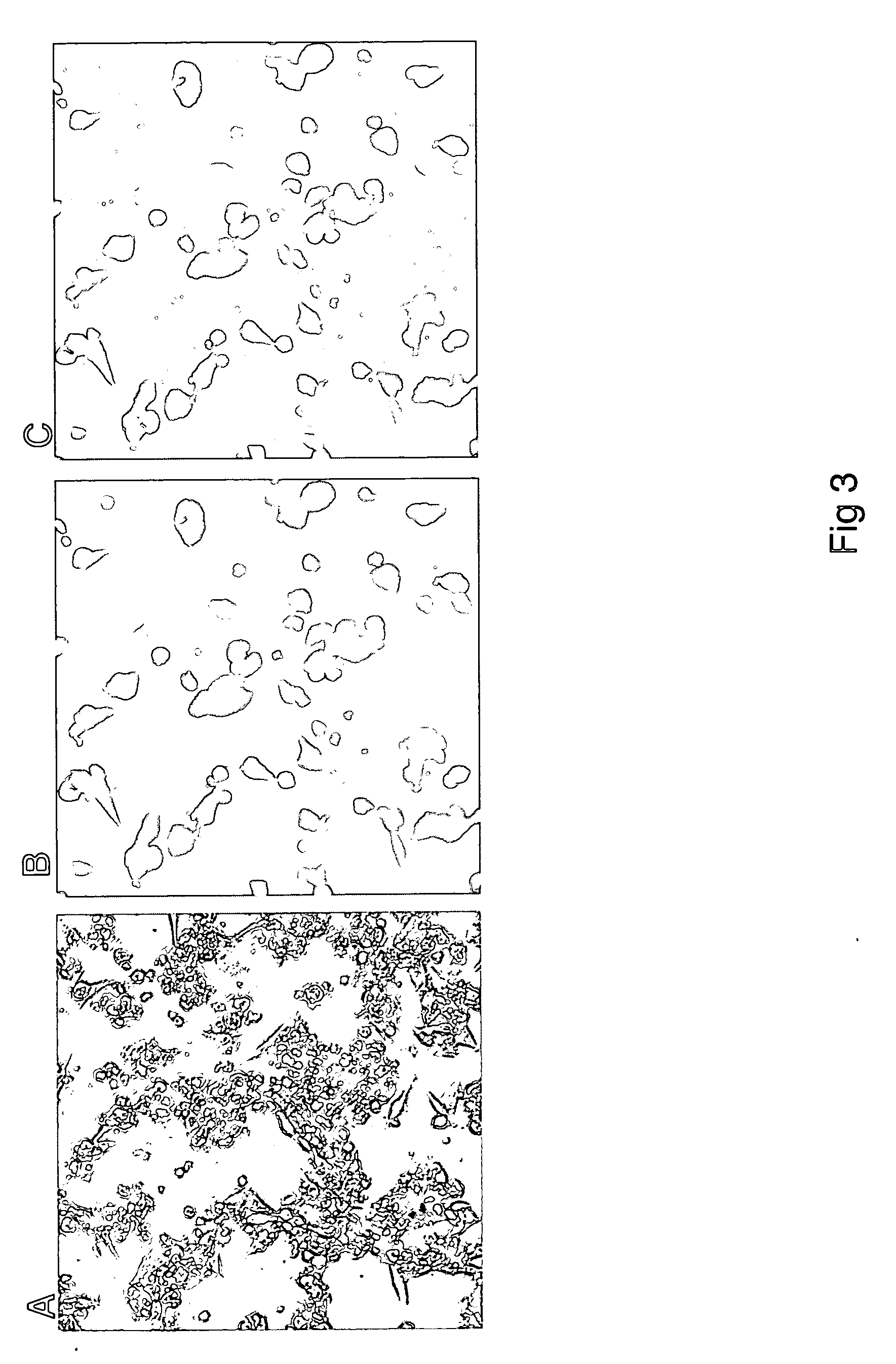Gene therapy of HBV infection via adeno-associated viral vector mediated long term expression of small hairpin RNA (shRNA)
a technology of adenovirus and hbv infection, which is applied in the direction of viruses/bacteriophages, biochemistry apparatus and processes, and sirna is very expensive, and can solve the problems of short half life, low efficiency of current treatment of chronic infection, and high cost of sirna, so as to reduce the viral load of hbv, inhibit the expression of hbv gene, and display synergistic anti-hbv effects
- Summary
- Abstract
- Description
- Claims
- Application Information
AI Technical Summary
Benefits of technology
Problems solved by technology
Method used
Image
Examples
example 1
[0034] To probe new gene functions: A new gene is suspected to be an oncogene, which may be involved in hepatocarcinogenesis. One can first design shRNAs to target this gene. Next, oligos coding for these shRNAs are chemically synthesized. Next, oligos are annealed and inserted into multiple cloning sites of pAVU6+27 plasmid to generate shRNA expression cassettes. Next, the shRNA expression cassettes are subcloned into pAAV plasmid and packaged into AAV-shRNA vectors. After that, HCC cell lines (such as HepG2, Huh7, Hep3B etc) are infected with AAV-shRNA vector with different MOls. Target gene expression level is checked by RT-PCR or western blot, as is cell proliferation, and apoptosis.
example 2
[0035] Gene therapy for chronic infectious diseases, such as HCV. First, one can design shRNAs to target HCV RNA. Next, AAV-shRNA vectors are generated. Next, HCV reproducing cells are infected with AAV-shRNAs, and anti-HCV efficacy is measured with ELISA assay and real time RT-PCR assay. Next, animals or patients are given a certain amount of MV-shRNA vectors systemically or via portal vein. Next, viral load and / or liver functions are monitored.
example 3
[0036] Gene therapy for cancers, such as liver cancer. If gene A is a specific oncogene contributing to hepatocarcinogenesis, and is essential to maintain HCC growth, then specific shRNAs targeting gene A will be designed and AAV-shRNA vectors will be generated. AAV-shRNA vectors will be injected intravenously or intratumorly. The vectors can be injected weekly or monthly depending on the effects checked under CT (patents).
Additional Examples
Constructs
[0037] pAVU6+27, which contains human U6 promoter and the first 27-bp of U6 RNA coding sequence, has been described by Paul et al., 2002, Nat Biotechnol 20:505-508. A series of shRNA expression vectors was generated by inserting annealed oligos containing sense-TTCG-antisense sequence into pAVU6+27 vector between Sal I and Xba I sites.
[0038] The oligo sequences coding for the sense strand of shRNA were:
87i,5′-GACTACTGCCTCACCCATA-3′;(SEQ ID NO:1)157i,5′-CATGGAGAGCACAACATCA-3′;(SEQ ID NO:2)451i,5′-GACTACCAAGGTATGTTGC-3′;(SEQ ID N...
PUM
| Property | Measurement | Unit |
|---|---|---|
| Fraction | aaaaa | aaaaa |
| Electric charge | aaaaa | aaaaa |
Abstract
Description
Claims
Application Information
 Login to View More
Login to View More - R&D
- Intellectual Property
- Life Sciences
- Materials
- Tech Scout
- Unparalleled Data Quality
- Higher Quality Content
- 60% Fewer Hallucinations
Browse by: Latest US Patents, China's latest patents, Technical Efficacy Thesaurus, Application Domain, Technology Topic, Popular Technical Reports.
© 2025 PatSnap. All rights reserved.Legal|Privacy policy|Modern Slavery Act Transparency Statement|Sitemap|About US| Contact US: help@patsnap.com



